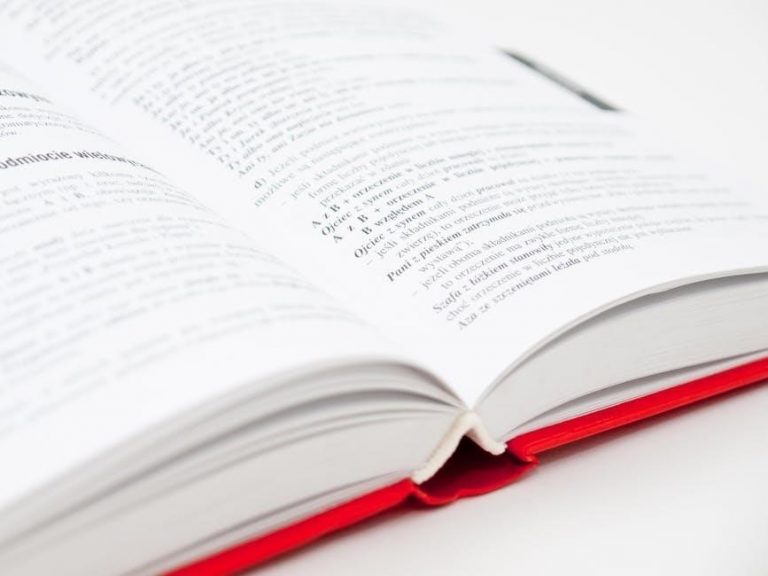Honeywell Humidifier Manual⁚ A Comprehensive Guide
This comprehensive guide provides detailed instructions and troubleshooting tips for your Honeywell humidifier. Learn about setup, operation, maintenance, and safety precautions to ensure optimal performance and longevity. Discover how to achieve the ideal humidity level for your home and address common issues effectively. Consult this manual for all your Honeywell humidifier needs.
Understanding Your Honeywell Humidifier Model
Before operating your Honeywell humidifier, carefully identify your specific model number. This information is crucial for accessing the correct user manual and troubleshooting guides. The model number is usually found on a label affixed to the unit itself, often located on the back or bottom. This label will also contain other essential details such as voltage requirements and serial numbers. Knowing your model number ensures you receive the most accurate and relevant information for your particular humidifier. This is important for maintenance, troubleshooting, and warranty claims.
Different Honeywell humidifier models may have varying features and functionalities. Some might offer digital controls with adjustable humidity settings, while others might utilize simpler manual controls. Understanding the unique features of your model will enhance your user experience and ensure you maximize its capabilities. Consult your user manual for a detailed overview of your specific model’s capabilities and operating instructions. Take note of any special features or limitations to avoid potential problems. Proper understanding ensures efficient and safe operation.
Important Safety Instructions and Precautions
Always unplug your Honeywell humidifier before cleaning, refilling, or performing any maintenance. Never operate the humidifier with wet hands to prevent electric shock. Ensure the humidifier is placed on a stable, level, and waterproof surface, away from heat sources and direct sunlight. Avoid placing the humidifier near electrical outlets or flammable materials. Always use only the recommended amount of water; overfilling can lead to leaks and malfunctions. Never use tap water containing high mineral content; this can cause mineral buildup and damage the unit.
Regularly inspect the power cord for any signs of damage; discontinue use if the cord is frayed or damaged. Do not attempt to repair the humidifier yourself; contact Honeywell customer support or a qualified technician for repairs. Keep the humidifier out of reach of children and pets to prevent accidents. Never leave the humidifier unattended while in operation. Proper ventilation is necessary to prevent excessive moisture buildup in the room. Always refer to the provided cleaning instructions to maintain hygiene and prevent mold growth.
Setting Up Your Honeywell Humidifier⁚ Placement and Installation
Begin by selecting a suitable location for your Honeywell humidifier. Choose a stable, flat, and waterproof surface, ensuring it’s at least four feet (1.2m) away from beds and other furniture. The area should be well-ventilated to prevent excessive moisture buildup. Avoid placing the unit near heat sources, direct sunlight, or electrical outlets. Ensure the surrounding temperature remains within the humidifier’s operational range, typically between 32°F (0°C) and 160°F (71°C), to prevent damage or malfunctions. The humidifier should be positioned to allow for easy access to the water tank and other components for filling and cleaning.
Before plugging in the humidifier, inspect the power cord for any signs of damage. Ensure the power outlet is properly grounded. Once appropriately positioned, fill the water tank with the recommended amount of water, avoiding overfilling. Refer to your specific model’s manual for detailed instructions on water filling procedures. After filling the tank, securely place it back onto the base. Plug the humidifier into the power outlet and turn it on according to the instructions in your model’s user manual. Always ensure proper ventilation to maintain a comfortable and safe environment.
Operating Your Honeywell Humidifier⁚ Basic Controls and Functions
Familiarize yourself with your Honeywell humidifier’s control panel. Most models feature a power switch, allowing you to easily turn the unit on and off. Many models also include settings for adjusting the humidity output level, often with options for low, medium, and high settings. Some advanced models may incorporate digital controls with precise humidity level adjustments and digital readouts. Understand the purpose of each button and function before operating the device. Consult your specific model’s manual for detailed explanations of each control.
Observe the indicator lights on your humidifier’s control panel. These lights often indicate the humidifier’s operational status, such as whether it’s running, whether the water level is low, or if there are any error conditions. Pay attention to these indicators to ensure the humidifier is functioning correctly and to promptly address any potential issues. If you encounter any problems, refer to the troubleshooting section of your user manual. Remember to always unplug the humidifier before cleaning or performing maintenance to prevent electrical shock.
Manual Humidity Control⁚ Adjusting Output Levels
Many Honeywell humidifiers offer manual control over the humidity output. This allows you to fine-tune the amount of moisture released into the air, customizing the level of humidity to your preferences. Locate the control dial or buttons responsible for adjusting the output level. Typically, you’ll find options for low, medium, and high settings, though some models offer a wider range of adjustments. Start with a lower setting and gradually increase the output as needed, monitoring the humidity levels in your environment using a hygrometer.
The ideal humidity range for most homes is between 30% and 50%, although personal preferences may vary. Excessive humidity can lead to mold and mildew growth, while insufficient humidity can cause dry skin, respiratory irritation, and discomfort. Experiment with different output levels to find the setting that maintains comfortable humidity levels within your desired range. Remember, the room size and climate will affect how quickly the humidifier raises the humidity levels. Observe the humidifier’s performance and adjust the output accordingly to achieve and maintain your desired humidity.
Water Filling and Maintenance⁚ Preventing Overfilling and Leaks
Proper water filling and regular maintenance are crucial for preventing leaks and ensuring your Honeywell humidifier functions optimally. Always use clean, fresh tap water; avoid using distilled or filtered water unless specifically recommended in your model’s manual. Before filling, inspect the tank for any cracks or damage. Carefully fill the tank to the indicated maximum fill line; overfilling can lead to spills and leaks. Some models have an overflow mechanism, but it’s best to avoid relying solely on this. Never operate the humidifier without sufficient water. Regularly check the water level during operation to ensure it doesn’t run dry. This prevents damage to the internal components and ensures consistent humidification.
After each use, empty the water tank completely to prevent bacterial growth and mineral buildup. Clean the tank thoroughly with mild soap and water, rinsing well and allowing it to air dry completely before refilling. Inspect the base and other components for any signs of water damage or leaks. Address any leaks promptly to prevent further damage. Follow your model’s specific cleaning instructions to maintain hygiene and prevent mineral deposits from clogging the humidifier’s components, ensuring consistent and efficient operation. Regular cleaning significantly extends the lifespan of your Honeywell humidifier, preserving its performance and preventing potential malfunctions.
Regular Cleaning and Maintenance⁚ Ensuring Optimal Performance
Regular cleaning is essential for maintaining optimal performance and extending the lifespan of your Honeywell humidifier. The frequency of cleaning depends on usage and water hardness; however, weekly cleaning is generally recommended. Begin by unplugging the humidifier from the power outlet and allowing it to cool completely before starting the cleaning process. Empty the water tank and rinse it thoroughly with warm water and mild dish soap. Avoid using abrasive cleaners or harsh chemicals, as these could damage the humidifier’s components. Pay close attention to the areas where mineral deposits tend to accumulate; these are often the internal components.
After washing, rinse all parts thoroughly with clean water, ensuring no soap residue remains. Allow all components to air dry completely before reassembling. For models with filters, refer to the filter replacement schedule in your manual. Regular cleaning prevents the growth of mold and mildew, improving air quality and preventing unpleasant odors. It also prevents mineral buildup from clogging internal components, thereby maintaining consistent and efficient humidification. Neglecting regular cleaning can lead to reduced performance, potential malfunctions, and even damage to the humidifier.
Troubleshooting Common Issues⁚ Addressing Malfunctions
If your Honeywell humidifier malfunctions, this section provides solutions to common problems. First, check the power cord and ensure it’s securely plugged into a functioning outlet. If the humidifier isn’t turning on, verify the power switch is in the “on” position. Inspect the water tank to ensure it’s properly filled and correctly seated in the base. Low water levels will automatically shut off many models. If the humidifier is running but producing little or no mist, check for mineral buildup or filter clogging. Refer to the cleaning instructions provided in this manual for detailed cleaning steps. If the humidifier is making unusual noises, such as grinding or rattling sounds, this could indicate a mechanical problem; check for any loose components.
If the humidifier is leaking, ensure the water tank is correctly aligned and not overfilled. Inspect the base and tank for any cracks or damage. If the unit continues to malfunction despite these checks, refer to the warranty information and contact customer support for assistance. Do not attempt any repairs yourself unless explicitly outlined in the manual; improper repairs could void the warranty. Remember to unplug the humidifier before performing any checks or maintenance. Always consult the specific troubleshooting section within your model’s user manual for tailored guidance. Keeping a clean and well-maintained humidifier is key to preventing many issues.
Filter Replacement and Maintenance
Regular filter replacement is crucial for maintaining optimal performance and hygiene in your Honeywell humidifier. The frequency of replacement depends on factors like water hardness and usage frequency. Consult your specific model’s manual for the recommended replacement schedule. Using a dirty or clogged filter can reduce humidification efficiency, increase energy consumption, and potentially lead to mineral buildup or other issues. Before replacing the filter, always unplug the humidifier from the power outlet to prevent electric shock. To replace the filter, locate the filter compartment usually accessed by opening a door or removing a panel. Carefully remove the old filter, disposing of it properly according to local regulations.
Install the new filter, ensuring it’s correctly positioned and securely fitted. Consult your manual for illustrations and specific instructions regarding filter orientation and installation. Once the new filter is installed, reassemble the humidifier and plug it back into the power outlet. It’s important to use genuine Honeywell replacement filters to guarantee optimal performance and compatibility. Using non-approved filters might void the warranty and potentially damage your humidifier. After filter replacement, run the humidifier for a short period to allow it to fully saturate the new filter before leaving it running unattended. Regularly check your filter for signs of wear or clogging, even if it’s not yet time for a full replacement, to ensure optimal performance.
Understanding Humidity Levels⁚ Optimal Ranges for Comfort
Maintaining the right humidity level in your home significantly impacts comfort and health. Industry experts recommend an optimal relative humidity (RH) range of 30-50% for most climates. However, this can vary depending on factors like personal preferences, climate, and health conditions. Lower humidity levels (below 30%) can lead to dry skin, irritated airways, and increased susceptibility to respiratory illnesses. Conversely, excessively high humidity (above 50%) can create a breeding ground for mold, mildew, and dust mites, potentially triggering allergies and respiratory problems. The ideal humidity range can also fluctuate depending on the season; slightly lower humidity is often preferred during warmer months to prevent discomfort.
Using a Honeywell humidity monitor can help you accurately measure the RH in your home. This allows for precise adjustments to your humidifier’s output to achieve and maintain your desired humidity level. Regular monitoring helps prevent both excessively dry and overly humid conditions. Consider your personal preferences and any health concerns when determining your ideal humidity range. If you have respiratory issues or allergies, consulting a doctor or allergist is recommended for personalized guidance on optimal humidity levels; Remember that maintaining a balanced humidity level contributes to a healthier and more comfortable living environment.
Finding Your Honeywell Humidifier Manual Online
Misplacing your physical Honeywell humidifier manual is a common frustration. Fortunately, accessing your manual online is usually straightforward. Begin by identifying your specific Honeywell humidifier model number. This number is typically located on a label affixed to the unit itself, often on the back or bottom. Once you have the model number, use a search engine (like Google, Bing, or DuckDuckGo) to search for “[your model number] Honeywell humidifier manual.” This targeted search should yield several results, potentially including direct links to PDF versions of the manual on the Honeywell website or other reputable sites that host appliance manuals. Explore the results carefully; only download manuals from trusted sources to avoid potentially harmful files.
If your search doesn’t immediately yield your specific manual, try searching for your humidifier’s model series (if known) instead of the exact model number. Many manuals cover a range of similar models within a series. Alternatively, visit the official Honeywell website and explore their customer support or product support section. Often, they offer a searchable database of manuals where you can enter your model number to directly download the relevant PDF. Should you encounter difficulties locating your manual online, contacting Honeywell customer support directly through their website or phone number is recommended for assistance. They can often provide a digital copy or guide you through the process of obtaining one.
Warranty Information and Customer Support
Using Essential Oils with Your Honeywell Humidifier (If Applicable)
Adding essential oils to your Honeywell humidifier can create a pleasant aromatherapy experience, but it’s crucial to proceed cautiously and follow specific guidelines. Not all Honeywell humidifiers are designed for essential oil use; check your model’s manual to confirm compatibility. Using incompatible oils can damage your humidifier or void the warranty. If your model permits essential oil use, always use high-quality, 100% pure essential oils specifically designed for diffusers. Avoid using synthetic fragrances or oils that are not specifically labeled for diffusion. Begin with a small amount of oil – typically a few drops – and observe the results. Too much oil can create an overly strong scent or leave residue in your humidifier.
Before adding essential oils, ensure your humidifier’s water tank is properly filled with clean water. Never add essential oils directly to the tank without water. Mix the essential oil with water in a separate container before adding it to the humidifier tank. This prevents the oil from accumulating in one area and potentially causing damage. Regularly clean your humidifier’s tank and components as per the manufacturer’s instructions to prevent oil buildup and maintain optimal performance. Always follow the essential oil manufacturer’s instructions and safety guidelines for dilution ratios and usage. If you experience any adverse reactions or notice any unusual behavior from your humidifier, discontinue use immediately and consult the user manual.



